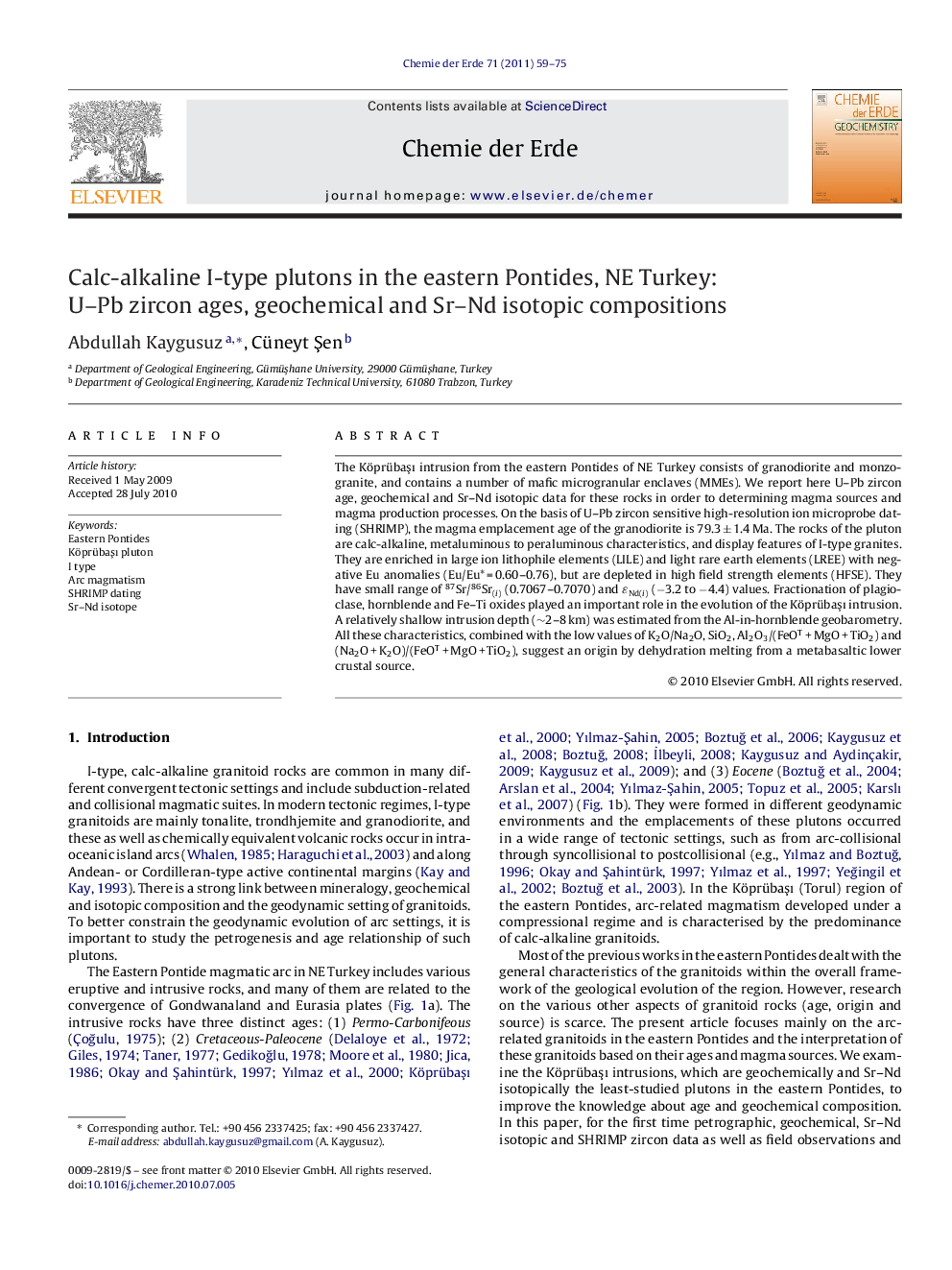| Article ID | Journal | Published Year | Pages | File Type |
|---|---|---|---|---|
| 4407000 | Chemie der Erde - Geochemistry | 2011 | 17 Pages |
The Köprübaşı intrusion from the eastern Pontides of NE Turkey consists of granodiorite and monzogranite, and contains a number of mafic microgranular enclaves (MMEs). We report here U–Pb zircon age, geochemical and Sr–Nd isotopic data for these rocks in order to determining magma sources and magma production processes. On the basis of U–Pb zircon sensitive high-resolution ion microprobe dating (SHRIMP), the magma emplacement age of the granodiorite is 79.3 ± 1.4 Ma. The rocks of the pluton are calc-alkaline, metaluminous to peraluminous characteristics, and display features of I-type granites. They are enriched in large ion lithophile elements (LILE) and light rare earth elements (LREE) with negative Eu anomalies (Eu/Eu* = 0.60–0.76), but are depleted in high field strength elements (HFSE). They have small range of 87Sr/86Sr(i) (0.7067–0.7070) and ɛNd(i) (−3.2 to −4.4) values. Fractionation of plagioclase, hornblende and Fe–Ti oxides played an important role in the evolution of the Köprübaşı intrusion. A relatively shallow intrusion depth (∼2–8 km) was estimated from the Al-in-hornblende geobarometry. All these characteristics, combined with the low values of K2O/Na2O, SiO2, Al2O3/(FeOT + MgO + TiO2) and (Na2O + K2O)/(FeOT + MgO + TiO2), suggest an origin by dehydration melting from a metabasaltic lower crustal source.
